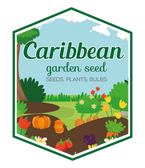
Herb Seeds - BASIL ,Clove Scented
FAST & FREE SHIPPING
Over 90% of our orders are processed and ship out by next business day.
We are currently processing and shipping most orders within 1-3 business days. (backorders not included) Due to high demand during the peak months of January to May, orders may require additional time for packaging /shipment.
Free shipping for orders over $54.95. Excludes live plants, fresh products And Stackable Black Plastic Nursery Crate
Shipping and handling charges will cover outbound freight and packaging materials. Fees are applicable to all orders, based on total order value pre-tax. Expedited services can be selected at Checkout with extra fees.
- Free shipping to lower 48 states on orders $54.95+
- (Most Items), excluding live plants, plant bulbs, and black plastic nursery crate.
- Safe Seed Pledge
- Satisfaction Guaranteed
- Select your desired size and/or color from the available options.
-
High Quality, Untreated, Open pollinated Garden Seeds. Great in containers
- Also known as Himalayan Basil and East Indian Tree Basil, this extremely fragrant herb originated in tropical Africa and Asia
- It has a clove/mint scent and flavor in it’s 4” leaves
- Produces delicate white flowers
- Excellent in teas, said to be a digestive aid and to repel flying insects
- Seeds per Ounce: 21,000
The foliage of this herb is clove/mint scented! Use as a food flavoring, tea, or simply a sweet-smelling, decorative addition to your herb garden!
Native to India and ancient Persia, basil has a long history as one of the most revered of herbs. Ancient legends give basil a strong religious connection, stating that it possesses healing powers. In many cultures basil is a symbol of love, and given as a token of affection or engagement; other meanings include protection and truth.
In Greek and Roman cultures, however, basil represented hate and misfortune; because of this, gardeners would often shout abuses at their plants to help them grow.
Sowing: Since basil thrives in warm weather, it grows best when the soil has warmed and there is no chance of frost. Gardeners with short growing seasons may want to start their seeds indoors 3-4 weeks before the last frost date, sowing them thinly in flats and providing heat to speed germination. Transplant 15-18" apart. To direct sow, plant the seeds 1/4" deep in rich soil and full sun, thinning to 15-18" apart when the seedlings develop. Basil also grows well indoors or as a container plant.
Growing: Basil thrives in soil that drains well, yet needs water often. If the weather drops below 50 degrees, provide protection. As the plant grows, pruning it helps it to develop into a bushy, healthy plant; pruning is also important because once the plant flowers, it will begin to wilt and die. To prune the plant, remove the top several sets of leaves on each stem, taking care to leave at least three sets of leaves on the lower part.
HOW TO GROW GUIDE
LET OUR CUSTOMER SPEAK FOR US

![[Seeds] - Caribbeangardenseed](http://caribbeangardenseed.com/cdn/shop/files/gift-card-gift-card-1_1024x1024_dfa857db-9150-4315-a362-7f0bb3fb9c47_60x28.png?v=1722895789)







